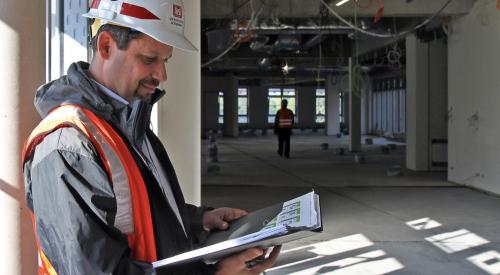The consequences of being misunderstood reverberate across teams and organizations. Projects can quickly become unwieldy, chaotic, hard to manage, and delays become inevitable. With many different subcontractors working on construction sites and so many ways to communicate, project managers need to carefully evaluate the technology they are using to collaborate.
Siloed Communication
With convention communication methods, project information can often become scattered across platforms and between partners. For example, project managers may use email to communicate with architects so that information is listed in plain writing next to attachments. But that same manager may prefer to text or call trade partners for day-to-day communication. The consequence, however, of using different communication channels is that information is siloed and harder to share and reference. In addition, the more spread out messages become, the more likely they will be missed.
To avoid miscommunication on hectic job sites, it’s vital that everyone—from the architect to property owners to project managers and trade partners—be on the same page at all times. Whether at home, in the office, or at a remote job site, these groups should be able to access identical copies of drawings, blueprints, plan notes, budgets and other details of the project necessary to keep everyone working in sync.
Project managers need a digital record everyone can reference
Rather than relying on old-fashioned pen and paper, or a patchwork of digital solutions not designed for cross-channel collaboration, modern field management platforms can solve this problem by digitizing daily processes so project managers gain a real-time view of project progress, as well as team responsibilities and action items. Information is centralized and securely stored. Connecting information in this manner can help identify potential misunderstandings before they become bigger issues. Project managers never have to worry about losing important documents or communications, and if there is any confusion on the job site, users can quickly achieve clarity by referencing the digital record or by sending a quick message within the platform that everyone can see.
Instead of wasting hours tracking down old text messages or deciphering scribbled notes written down in the back of a truck, contractors can see exactly who is responsible for what and when across job sites. With this greater visibility, contractors can remain in sync with daily contacts and even take proactive steps to prevent costly delays or errors and ensure jobs are completed on time and under budget.
After all, misunderstanding between partners has serious consequences. Even if something works for one build, it may not work for another. Different groups have different styles, and moving to a unified data-driven platform designed for collaboration ensures messages aren’t lost and are easily understood.
Miscommunication may be one of the biggest causes of costly job site errors, but it doesn’t have to be. Too much is at stake.












